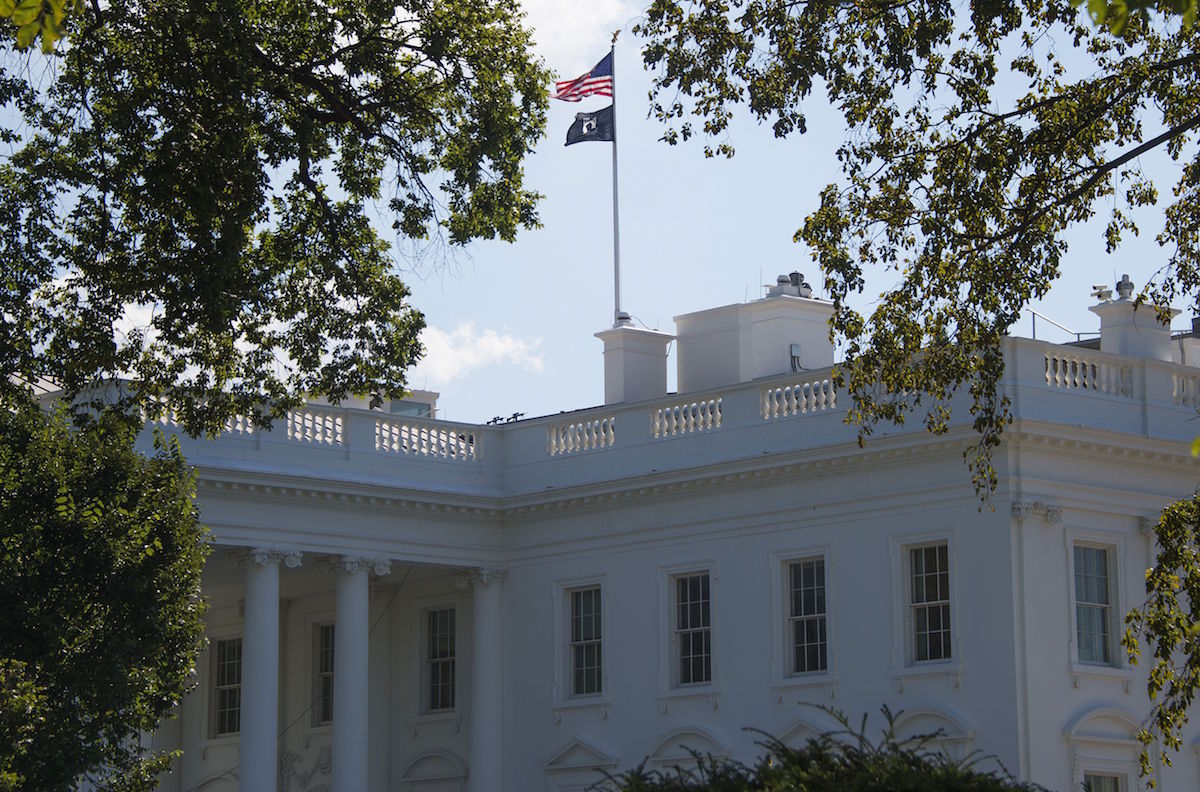
The first United States prisoners of war did not fare well: during the American Revolution, more men were killed as POWs of the British than they were on the battlefield, according to Dr. Robert Doyle, a professor of history at the Franciscan University of Steubenville and author of multiple books about POWs, including The Enemy in Our Hands: Americaʼs Treatment of Prisoners of War from the Revolution to the War on Terror.
And when the men who did survive were released, nobody said anything.
“Nobody said, ‘Thank you very much,’” Doyle says. “They turned ‘em lose, sent them home, gave ‘em a pension and that was it.”
On National Prisoners of War/Missing in Action (POW/MIA) Recognition Day, which is observed on the third Friday in September, that treatment of prisoners of war can be hard to fathom—but it continued for centuries. Doyle, who is a veteran, says it was not until after the Vietnam War that the United States changed the way it acknowledged its POWs. Perhaps surprisingly, it took a divisive war to change attitudes. As Doyle explains it, the lack of unanimous support for the war meant that POWs—in contrast to soldiers who were fighting—were broadly accepted as heroes.
In 1979, through a proclamation from President Jimmy Carter, POW/MIA Recognition Day was first acknowledged. From then on, each president has signed an annual proclamation for the commemoration. And in 1997, President Bill Clinton officially made National POW/MIA Recognition Day one of six days when the POW/MIA Flag is required by Congress to be displayed in certain locations.
Doyle says the POW world is a specifically difficult one, no matter which war you’re dealing with, and that makes it difficult to educate the public about their experiences. But their importance is now much more widely recognized than it once was.
“Wars are not won or lost because of POWs, they’re won or lost in spite of them,” he says. “Tactically, they’re not important. They’re important as symbols of resistance to the enemy or as propaganda pieces.”
Get your history fix in one place: sign up for the weekly TIME History newsletter
Still, however, the day of recognition passes unnoticed for many. And though POWs appear frequently in pop culture—Brody from Homeland; Bowe Bergdahl’s season of Serial; Angelina Jolie’s film Unbroken, about WWII POW Louis Zamperini—experts say they’re still widely misunderstood.
Part of the problem is how difficult it is to tell the true stories of men and women who’ve suffered this way, says Jim Brockman, a veteran who works as the curator of the Defenders of Bataan & Coregidor Museum and Study Center in Wellsburg, W.V.
Brockman’s museum is the largest collection in the world dedicated to a specific time period of WWII when, shortly after Pearl Harbor, American soldiers stationed in the Philippines were forced to surrender to the Japanese after a months-long battle to protect the Pacific. The surrender resulted in the taking of 12,000 to 16,000 American POWs by the Japanese, and their infamous 60-mile march to prison camps.
In May of 2016, President Obama signed into law the POW/MIA Remembrance Act, which directs the Architect of the Capitol to place a chair in the Capitol that honors American POWs or soldiers who are MIA. The act passed unanimously in the House and the Senate, perhaps signaling acknowledgement for some veterans who’ve never received it.
Brockman—who remembers being spit on at the airport for wearing a uniform when he returned from Vietnam—appreciates that the times are changing for veterans, but he still doesn’t think enough has been or is being done for POWs. That becomes especially important as fewer and fewer of those who experienced imprisonment in past wars are around to share their memories. Just this past week, he received a notice that two former POWs from Bataan and Coregidor had passed away.
“History needs to be studied,” he says. “It needs to be in the classroom so you can find out what happened and so it doesn’t happen again, so it becomes something that we don’t just know about but that we remember.”
More Must-Reads from TIME
- Donald Trump Is TIME's 2024 Person of the Year
- TIME’s Top 10 Photos of 2024
- Why Gen Z Is Drinking Less
- The Best Movies About Cooking
- Why Is Anxiety Worse at Night?
- A Head-to-Toe Guide to Treating Dry Skin
- Why Street Cats Are Taking Over Urban Neighborhoods
- Column: Jimmy Carter’s Global Legacy Was Moral Clarity
Contact us at letters@time.com